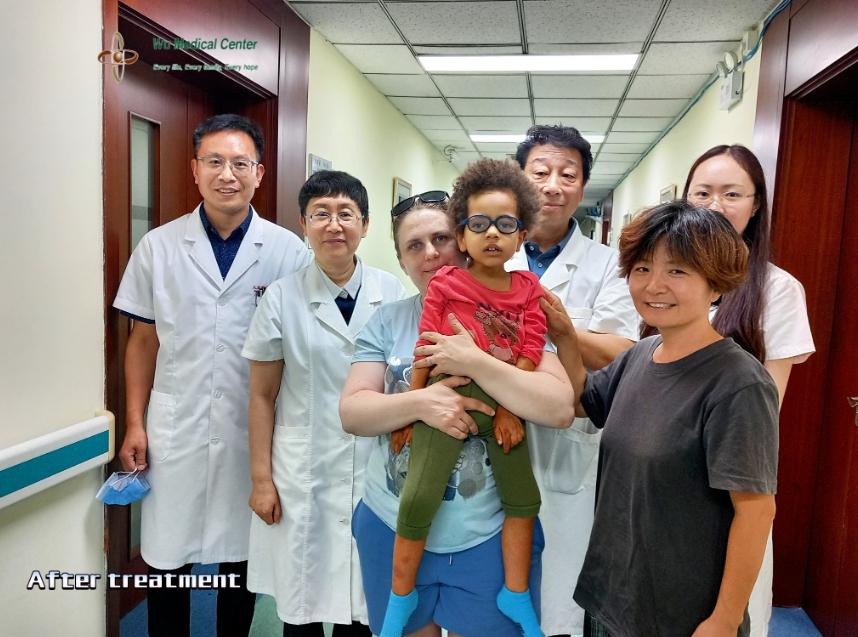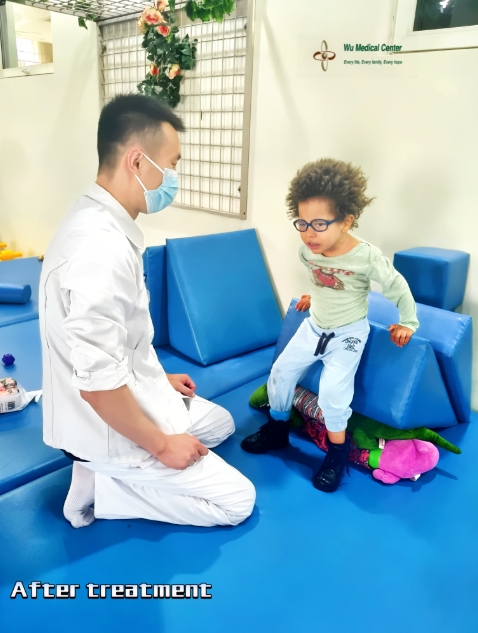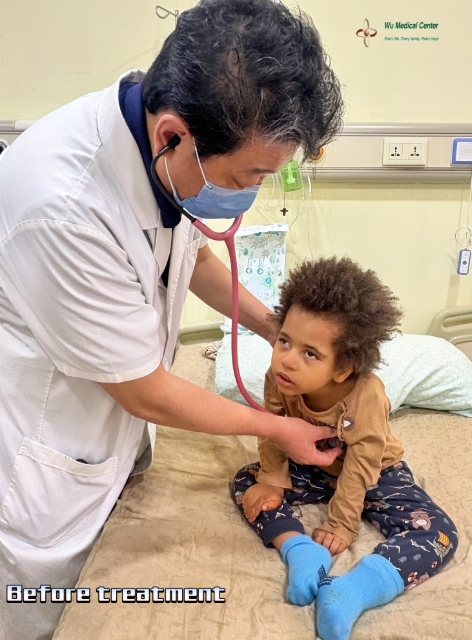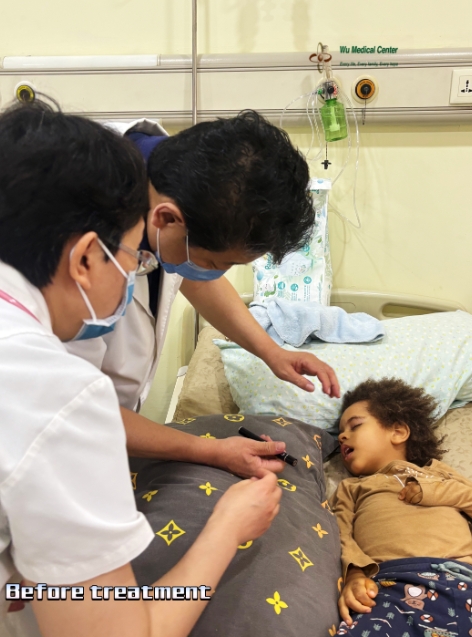David-Chikamso Stephen-Neurodevelopmental delay,Brain injury post-Lyme disease-(Romania)
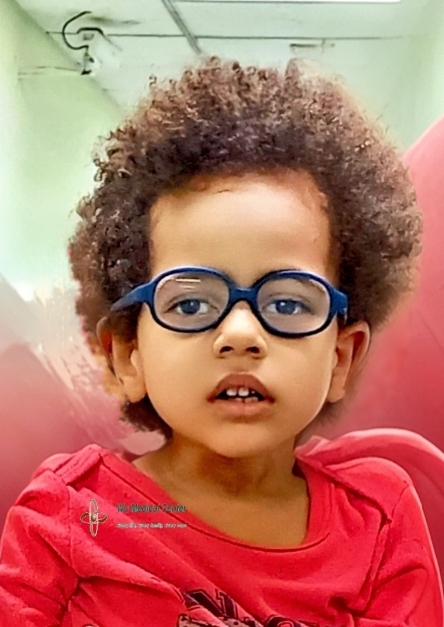 Patient Name: David-Chikamso Stephen
Patient Name: David-Chikamso Stephen
Gender: Male
Age: 3 years old
Nationality: Romania
Diagnosis: Neurodevelopmental delay,Brain injury post-Lyme disease
Condition upon Admission:
The child was born at term and was treated at a local hospital for Lyme disease infection after birth. Subsequently, the family noticed that he has impairments in motor function, cognitive function, and language function, leading to a diagnosis of "post-Lyme disease encephalopathy" at the local hospital. Currently, the child was unable to speak, roll over, or crawl. He could lift and grasp with both upper limbs, but had weak lower limbs and could not maintain a sitting position. He showed poor response to changes in his environment, got easily fatigued, and slept a lot. He had habitual constipation and intestinal bloating.
Physical Examination upon Admission:
The child's heart rate was 104 beats per minute, respiratory rate was 22 breaths per minute, and blood oxygen saturation was 95%. He had mild jaundice of the skin, no congestion in the pharynx, and his thoracic cavity was symmetrical on both sides. Breath sounds in both lungs were not clear, with large bronchial breath sounds and wheezing in the lower lungs. Heart sounds were strong, with occasional irregular rhythms, and no significant murmurs were heard in the auscultation areas of the heart valves. His abdomen was slightly distended, the liver and spleen were not palpable below the ribs, and percussion revealed tympanic sounds (indicative of intestinal bloating). There was no obvious edema in both lower limbs.
Neurological Examination:
The child was alert but appears lethargic and often slept excessively. He showed delayed responses to changes in sounds and light in the surrounding environment, and could only make single-syllable vocalizations and cries. Both pupils were equal in size and round, approximately 3 mm in diameter, with a sensitive light reflex. His chewing and swallowing abilities were slightly weak, and he had excessive drooling; he could consume pureed foods. Muscle strength in both upper limbs was grade 3, with some random grasping movements. Muscle strength in both lower limbs was grade 2, with limited voluntary movement. His limb muscle tone was somewhat low. He was unable to roll over or crawl. Tendon reflexes in all four limbs were diminished. The Babinski reflex was positive bilaterally. There were no signs of meningeal irritation.
Treatment Process:
The child was admitted with a clear diagnosis of "neurodevelopmental delay, brain injury post-Lyme disease." He received treatment involving neural stem cells, mesenchymal stem cells, and CAST therapy to replenish the normal number of neuronal cells in the brain, repair neural damage, improve blood circulation, regulate the immune system, and nourish brain neurons. This was complemented with comprehensive rehabilitation therapy.
Post-Treatment Status:
The child's condition has improved compared to the time of admission. The excessive sleeping has decreased, and his awake periods have lengthened. His ability to control his body has increased, with enhanced muscle strength in all four limbs. The muscle strength in both upper limbs has improved to grade 4, allowing him to support his body in assisted standing. The muscle strength in both lower limbs has increased to grade 3+, enabling him to stand for about 5 seconds with support from objects. His limb mobility has also improved. He is demonstrating more frequent rolling movements and can maintain independent sitting for longer periods. Cardiorespiratory function has improved, with wheezing sounds disappearing upon auscultation, clearer breath sounds compared to admission, and blood oxygen saturation maintained between 95% and 99%.
